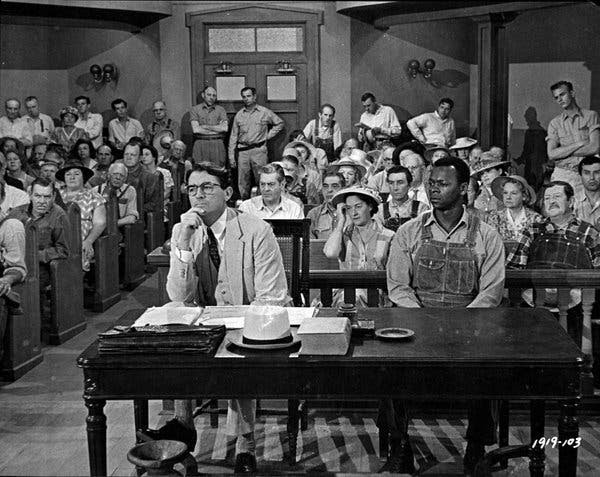I’m a couple of weeks into this project (estimated completion date: late 2031), and it’s only now dawned on me that there is a daf yomi on Shabbat as well. It turns out that Orthodox folks do study their daf on Shabbat, in the afternoon, at the yeshiva, before coming home for the havdala meal that ends the Sabbath and starts the meal. Since my Saturdays are packed with the holy study of children’s soccer and age-group swimming, I think I’ll try and pack two pages on Fri or on Sun (as we’re going to do today) to stay with the universal schedule.
Also, I realize that a daf yomi for folks who are into criminal justice, cynical asides, and presentist commentary, is a really niche endeavor (if you are among the three people who might want this to be a podcast, please pipe up! but I’m not holding my breath). So, for readers who are not into Talmud at all and want to read more about the criminal process, prisons, etc., I’m going to continue blogging on all those topics of course–you can just select the categories and tags you want, or simply click on posts that are relevant to you. 🙂
Anyway, having to bunch up pages 53 and 54 is not necessarily a bad thing, as the content itself is so crass and distasteful that I am going to opt out of most of the offensive, nitty-gritty details. Generally speaking, we’ve now turned to the fourth method of execution–stoning–and the sages are examining the long list of crimes that merit this horrific punishment and discussing the minutiae. The enthusiasm for intimate details of incest is quite the turn-off, as is the oft-maligned, and with good reason, discussion on prohibited same-sex sexual activity and the offensive analogies to bestiality. The Leviticus verses about this stuff are such a hurdle for many people who would otherwise find a lot of beauty and wisdom in scripture that there is much gnashing of teeth and creative interpretive efforts, etc., not to mention folks who turn their backs on their Judaism entirely. Here in the Bay Area there is abundant creative energy devoted to make sure that queer folks feel comfortable and at home in their religious community–at my home congregation, Sha’ar Zahav, our rabbi has articulated a vision according to which “there are other places to be LGBTQI and Jewish, but only one place where those identities are normative, celebrated, and guide the community. Near the new tapestries at the front entrance featuring stories of community members is a bright display of t-shirts, rainbow Judaica including mezuzot, tallitot and kippot, queer ketubot and books written by members LGBTQI and straight, and others featuring LGBTQI Jewish themes, demonstrating that this is the Jewish, queer normative space in the Bay Area where a diverse rainbow of people join together to create one, vibrant community.” Svara, a queer beit midrash, invites queer and trans people to “fall in love with your tradition” and invite their creativity to make a home for themselves in the text. It’s hard to ignore, though, the struggles and suffering brought about by these archaic verses and tractates in mainstream Orthodox communities; gay friends who left Orthodox homes have truly scarring experiences to share.
My approach to this talmudic content is not very creative or sophisticated or ornately conciliatory, but I think it does the job: the folks who said, wrote, and redacted this stuff were men of their time, with opinions of their time, which they considered pious but which I, as a person living in the 20th and 21st centuries, find loathsome, and therefore we should feel no need to excuse, creatively explain, or discuss. One of my liturgical heroes, Marcia Falk, introduced a wealth of human-centered, gender-transcending metaphors for divinity, and innovated blessings that put the focus on people doing the right thing in the real world, and had this to say about Orthodox critics:
And when, as inevitably will also happen, critics question our authenticity, deny our right to call our creativity and our creations Jewish, we-the members of the feminist-Jewish communities that help comprise klal yisrael, “the community of Israel”-need to remind them that Jewish prayer, like all of Jewish practice and belief, all of Jewish life, has never been finally “fixed”; rather, it has evolved, adapted, and changed throughout Jewish history. It is only recently, in fact, that the Hebrew liturgical tradition has ossified; it is not too late, we hope, to revive it. As we compose new prayers today to affirm diversity within unity, to express our visions of a true monotheism and our dedication to tikkun olam, repair of a fragmented world-as we compose and say such prayers, we place ourselves firmly in the tradition-a tradition that is still, always, in the process of becoming. We need to remind our critics, and ourselves, that tradition is not just what we inherit from the past; it is also what we create and pass on to the future.
One of our first assignments in rabbinical school involved creating a spiritual biography of sorts for ourselves, and what stood out for me, among other things, is how at every junction in which I wanted to take ownership of Jewish law, talmud, or other Jewish scholarly endeavors that I enjoy and have an aptitude for, all I encountered was orthodox, kippah-wearing men as the keepers of knowledge. This is not to say anyone necessarily stood in my way, but there’s a literacy that comes with growing up an Orthodox boy in a yeshiva that is very, very hard to acquire later in life, especially if one is trying to balance rigorous education with values that are not shitty. I’m working hard to acquire this literacy, and am very grateful that the program is rigorous, but that doesn’t mean that I have to apply this rigor to bits of scripture that are best left on the dung heap of irrelevant material in the Year of Our Lord 5875.
I will say this, though: the talmud didn’t corner the market on unpleasant discussions of sexual behavior. Modern, secular legal systems do this every day when defining sex crimes and when outlining the consequences of deviant sexual behavior. Heaps upon heaps of legal scholarship are devoted to the question of elements of rape and their applications to particular scenarios. Every legal system has to make complicated decisions about what it recognizes as sexual taboos; as late as the 19th century, incestuous marriage norms among royals in Hawaii, for example, clashed against missionary ideas of proper behavior, and the tragic story of princess Nahi’ena’ena is a case in point. There still is considerable regional and national variation regarding the laws of cousin marriage, a prohibition that does not, as it turn out, stem from genetic concerns. Jane Austen’s Mansfield Park ends in a marriage between first cousins. We are still constantly tracing and blurring the lines of what conduct should and should not lead to sex offender registration, and we’re still living down the disgrace of coming up with laws and enforcement strategies that target strangers while ignoring the much more common–and tragically underreported–occurrence of sexual abuse within the family or a circle of friends.
Anyway, here goes. The mishna lists the people who face stoning:
הַבָּא עַל הָאֵם, וְעַל אֵשֶׁת הָאָב, וְעַל הַכַּלָּה, וְעַל הַזְּכוּר, וְעַל הַבְּהֵמָה, וְהָאִשָּׁה הַמְּבִיאָה אֶת הַבְּהֵמָה. וְהַמְגַדֵּף, וְהָעוֹבֵד עֲבוֹדָה זָרָה, וְהַנּוֹתֵן מִזַּרְעוֹ לַמּוֹלֶךְ, וּבַעַל אוֹב וְיִדְּעוֹנִי, וְהַמְחַלֵּל אֶת הַשַּׁבָּת, וְהַמְקַלֵּל אָבִיו וְאִמּוֹ, וְהַבָּא עַל נַעֲרָה הַמְאוֹרָסָה, וְהַמֵּסִית, וְהַמֵּדִיחַ, וְהַמְכַשֵּׁף, וּבֵן סוֹרֵר וּמוֹרֶה.
The gemara’s mission on pages 53-54 is to fully examine the particular circumstances of each of these scenarios, trying on for size different arguments for what, precisely, is severe or taboo about the particular behavior. For example, does the recoil from a person who sleeps with his mother come from the fact that she’s his mother, or from the fact that she’s his father’s wife? Abaye says the former:
אָמַר אַבָּיֵי: דְּאָמַר קְרָא ״אִמְּךָ הִיא״. מִשּׁוּם אִמּוֹ אַתָּה מְחַיְּיבוֹ, וְאִי אַתָּה מְחַיְּיבוֹ מִשּׁוּם אֵשֶׁת אָב. אֶלָּא מֵעַתָּה, ״עֶרְוַת אֵשֶׁת אָבִיךָ לֹא תְגַלֵּה עֶרְוַת אָבִיךָ הִיא״, מִשּׁוּם אֵשֶׁת אָב אַתָּה מְחַיְּיבוֹ, וְאִי אַתָּה מְחַיְּיבוֹ מִשּׁוּם אִמּוֹ? אֶלָּא אִמּוֹ שֶׁהִיא אֵשֶׁת אָבִיו, קָאֵי הָכָא וּמְמַעֵט לַהּ, קָאֵי הָכָא וּמְמַעֵט לַהּ. הַשְׁתָּא, אִמּוֹ שֶׁאֵינָהּ אֵשֶׁת אָבִיו – מִיחַיַּיב, אֵשֶׁת אָבִיו שֶׁאֵינָהּ אִמּוֹ – מִיחַיַּיב, אִמּוֹ שֶׁהִיא אֵשֶׁת אָבִיו – לָא מִיחַיַּיב כְּלָל?
but this requires addressing Rav Ika’s question whether sleeping with one’s daughter-in-law is taboo because she’s a daughter analog or because she is the wife of one’s son:
אֶלָּא אָמַר רַב אַחָא בְּרֵיהּ דְּרַב אִיקָא: אָמַר קְרָא ״עֶרְוָתָהּ״, מִשּׁוּם עֶרְוָה אַחַת אַתָּה מְחַיְּיבוֹ, וְאִי אַתָּה מְחַיְּיבוֹ מִשּׁוּם שְׁתֵּי עֲרָיוֹת. אֶלָּא מֵעַתָּה: ״עֶרְוַת כַּלָּתְךָ לֹא תְגַלֵּה אֵשֶׁת בִּנְךָ הִיא לֹא תְגַלֶּה עֶרְוָתָהּ״ – הָכִי נָמֵי מִשּׁוּם עֶרְוָה אַחַת אַתָּה מְחַיְּיבוֹ וְאִי אַתָּה מְחַיְּיבוֹ מִשּׁוּם שְׁתֵּי עֲרָיוֹת?
Because the current explanation for these taboos–genetic defect potential–was not, obviously, available two thousand years ago, one possible avenue to understand this logic is through the Freudian explanation of incest taboos, which ascribes the honoring of ancestors as an extension of honoring the clan’s totem. Freud thinks that limitations on marriage within the clan stem from concerns that people will be tempted to personify the totem, kill their ancestors, and take their wives for themselves. Some of the terminology in this tractate, which uses the term עֶרְוַת אֵשֶׁת אָבִיךָ as an extension of עֶרְוַת אָבִיךָ, seems to suggest this sort of Freudian consideration. Eventually, though, the logical argument wins: the prohibition on sleeping with your mother comes from the fact that she’s your mother, whereas the prohibition on sleeping with your father’s wife is in place for scenarios involving a father’s wife who is not your mother:
מָה בְּאַזְהָרָה עָשָׂה הַכָּתוּב אִמּוֹ שֶׁאֵינָהּ אֵשֶׁת אָבִיו כְּאִמּוֹ שֶׁהִיא אֵשֶׁת אָבִיו, אַף בְּעוֹנֶשׁ עָשָׂה הַכָּתוּב אִמּוֹ שֶׁאֵינָהּ אֵשֶׁת אָבִיו כְּאִמּוֹ שֶׁהִיא אֵשֶׁת אָבִיו. ״אִמְּךָ הִיא״ – מִשּׁוּם אִמּוֹ אַתָּה מְחַיְּיבוֹ, וְאִי אַתָּה מְחַיְּיבוֹ מִשּׁוּם אֵשֶׁת אָב.
One of the interesting things about this stuff is the sages’ variance of opinions about the need to find a rationale for a sexual transgression. Some seem to believe that each incest prohibition has to have one, or at least one dominant, reason; others consider the fact that people can ransom themselves from death with a money offering, and therefore *can* be liable for the same transgression twice. Here’s an example:
וְרַבָּנַן, ״עֶרְוַת אָבִיךָ״ – מַמָּשׁ. הַאי מִ״וְּאֶת זָכָר״ נָפְקָא? לְחַיֵּיב עָלָיו שְׁתַּיִם. וְכִדְרַב יְהוּדָה, דְּאָמַר רַב יְהוּדָה: נׇכְרִי הַבָּא עַל אָבִיו – חַיָּיב שְׁתַּיִם, הַבָּא עַל אֲחִי אָבִיו – חַיָּיב שְׁתַּיִם.
These folks, as mentioned above, considered same-sex intercourse a sexual offense. A man who sleeps with his father is thus liable twice: for the incest and for the same-sex intercourse.
This line of thinking reminds me of an oldie-but-goodie case from the double jeopardy canon: Blockburger v. United States (1932). At the time, drug prohibition was in its infancy, and done through the Harrison Act, which placed taxes and controls over the distribution of drugs. Purchasing or using drugs was not a crime per se; rather, purchasing or using them not through the delineated process was (not unlike our Prop 64, come to think of it. There is nothing new under the sun).
Anyway, Blockburger bought some drugs on the street, which meant he violated two different provisions of the Harrison act: the prohibition on sale except in or from the original stamped package, and the prohibition of sale not in pursuance of a written order of the person to whom the drug is sold. Note that both offenses sprung from the same criminal incident. Blockburger therefore argued that prosecuting him for both was double jeopardy. The court, however, disagreed, explaining that while the incident was one and the same, the offenses were not:
The applicable rule is that, where the same act or transaction constitutes a violation of two distinct statutory provisions, the test to be applied to determine whether there are two offenses or only one is whether each provision requires proof of an additional fact which the other does not.
To commit the first offense, Blockburger should’ve bought drugs outside of a stamped package, but not without a written order; to commit the second, Blockburger should’ve bought drugs without a written order, but not outside the stamped package.
The principle in our daf is very similar: the idea that there should be some limitation on the piling up of wrongdoing for the same incident. But this only matters if there are consequences stemming from each conviction separately that can be aggregated. Fines can be aggregated and prison times can be served consecutively. But you can only be stoned once.
Tune in for more taboos tomorrow.











